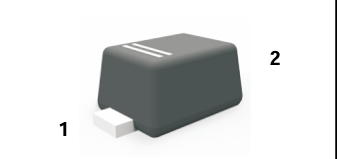Date:2025-05-19 Categories:Product knowledge Hits:445 From:Guangdong Youfeng Microelectronics Co., Ltd
Switching diodes are semiconductor devices widely used in electronic circuits for their ability to rapidly switch between conducting and non-conducting states, similar to an electrical switch. This unique functionality makes them essential components in various applications, including power supplies, digital circuits, and signal processing systems. To understand their working principle, we must first explore the fundamental structure and characteristics of diodes.
Diode Structure and PN Junction
Switching diodes A diode is a two-terminal semiconductor device primarily composed of a P-type semiconductor and an N-type semiconductor joined together, forming a PN junction. In P-type semiconductors, holes (positive charge carriers) are the majority carriers, while in N-type semiconductors, electrons (negative charge carriers) are predominant. At the interface of the PN junction, a depletion region is formed due to the diffusion of electrons from the N-side to the P-side and holes from the P-side to the N-side. This region lacks mobile charge carriers and acts as a barrier to the flow of current.

Previous: Classification, Structure, and Principle of MOSFET